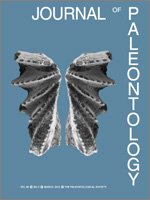The ecological segregation of large, multicellular eukaryotes in the Ediacaran in response to competitive feeding results in the evolution of novel morphological adaptations such as sturdy stems to elevate above lower-tier feeding guilds. Culmofrons plumosa n. gen. n. sp. lived attached to the ocean floor and probably fed osmotrophically from dissolved organic nutrients in the water column. Competition for nutrients with specialized lower-tiered organisms resulted in the evolution of a specialized non-feeding structure, drastically expanding the functional morphospace available to Ediacaran rangeomorphs. The first appearance of a cylindrical macroscopic stem in C. plumosa in the Briscal Formation of the Mistaken Point Ecological Reserve marks a significant departure from the modular repetitive branching typical of the Rangeomorpha, and exemplifies the importance of nutrient acquisition in early ecosystem engineering.
How to translate text using browser tools
1 March 2012
Ecological Tiering and the Evolution of a Stem: The Oldest Stemmed Frond from the Ediacaran of Newfoundland, Canada
Marc Laflamme,
Lija I. Flude,
Guy M. Narbonne
ACCESS THE FULL ARTICLE

Journal of Paleontology
Vol. 86 • No. 2
March 2012
Vol. 86 • No. 2
March 2012




